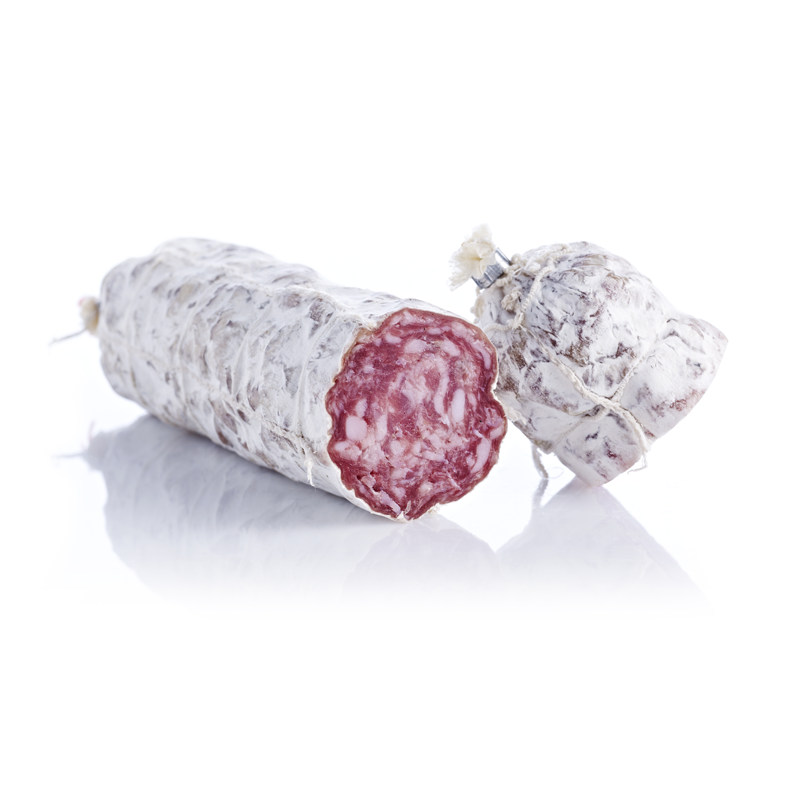The predominant molds isolated from spontaneous colonized dried sausages are different Penicillium species, but Scopulariopsis, Aspergillus and other fungi may also be present. As mentioned in an earlier paragraph the non-starter molds arise from spores of the house-flora.
Chr. Hansen offers different strains of Penicillium nalgiovense giving the sausage surface a whitish- grayish appearance. As with yeasts, molds oxidize lactic acid and other acids, and produce ammonia thereby increasing pH.
Since molds form a coating over the surface, use oxygen and produce catalase, they reduce chemical lipid oxidation and thereby rancidity. Additionally, P. nalgiovense affects flavor formation due to diverse metabolic activities such as lipolytic and proteolytic activity.
In addition to Penicillium species, yeast strains are also used for surface treatment of South European style dried sausages.
Source: Chr.Hansen

